What Is ISO? (And Why it Matters in Photography!)
Exposure works in three parts: aperture, shutter speed, and then ISO. But what is ISO?
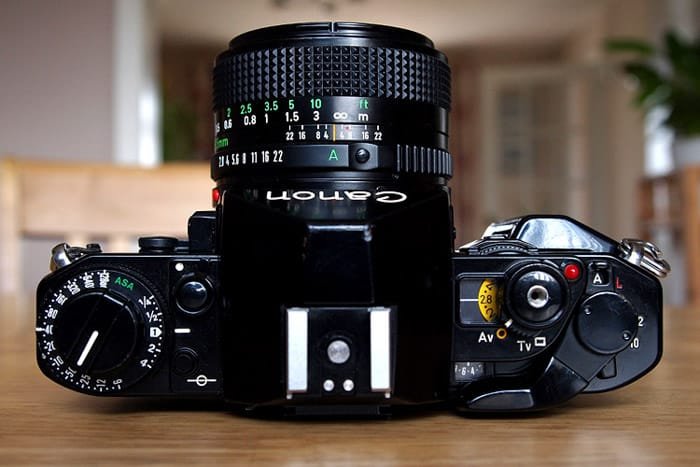
What Is ISO in Photography?
ISO is an important parameter that determines how bright your image will be. It’s helpful because it gives photographers an extra option to manipulate their exposures. It gets its name from the International Standards Organisation, which has set this standard in 1988.
ISO works slightly differently in film and digital cameras. In this first, larger part of the article, we’ll discuss ISO in digital cameras.
Unlike shutter speed and aperture, ISO doesn’t change the amount of light coming into the camera when brightening or darkening the image. Rather, it determines how the camera deals with that already set amount of light after the exposure is done.
So thus ISO generally defines the sensitivity of the sensor or film.
Because of this, it’s not technically a component of exposure. However, in all practical situations, we’re better off treating it as one.
Why Do We Use ISO?
We use ISO because the two basic exposure parameters, shutter speed and aperture, don’t offer enough leeway for creating a correct exposure under all circumstances.
Both shutter speed and aperture can be used to change exposure, but they also have important side effects. The shutter speed controls the motion blur. The aperture controls the depth of field and sharpness.
With only these two, you can’t freely combine any shutter speed with any aperture value. The image would be under or overexposed, and hardly ever correct.
So, ISO has been introduced to control brightness independently from the other two by setting the sensitivity towards the incoming light and the amount of grain on the picture.
Stops of ISO
ISO can be measured relatively in exposure value stops (or stops). The camera’s ISO scale is like shutter speed in the sense that when it’s doubled, the exposure is also doubled. A stop in ISO means double or half the light compared to the previous stop.
They are proportional to one another. A low ISO number will give a dark exposure and a high ISO will give a bright exposure. It’s simpler then aperture.
ISO most often starts at the value of ISO 100. This is the lowest, darkest setting, also called the base ISO. The next full stop, ISO 200, is twice as bright, and ISO 400 is twice as bright than that. Thus, there are two stops between ISO 100 and 400, four stops between 100 and 1600, and so on.
This series goes on, but it has practical limits. Exactly where that limit is, varies from camera to camera.
However, generally, we can use ISO up to ISO 6400 to 25600. This means 6 to 8 stops of extra brightening potential. In other words, you can correctly expose for a 64 to 256 times darker environment than at base setting.
There are also even higher settings included in modern digital cameras, but they reduce image quality so much that they’re basically unusable. More on this further down.
When setting the ISO, most cameras offer more precision than just full stops. You’re more likely to find that all exposure parameters are variable in 1/3 stop increments.
Changing Exposure with ISO
Let me demonstrate ISO using actual photos as you can see in the slideshow below.
The photos are displayed in the following order: 100, 200, 400, 800, 1600, 3200. The aperture and shutter speed remain constant throughout them. Only the ISO is changing so that you can see its effect on a photo.
The ideal exposure is shown in the fourth photo which was taken at ISO 800.
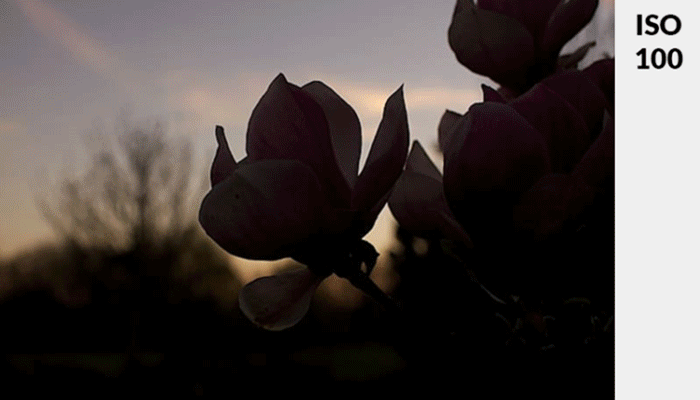
As you may have noticed by now, nothing affects the exposure in one single way. There are consequences to using different ISO values.
Side Effects of ISO
If we could brighten our images without any penalties, that would be a paradise for photographers. It would almost be too good to be true.
But it’s not the case: increasing ISO has detrimental effects on image quality, to varying degrees in different cameras.
There are two (almost) separate consequences. For sure, you know one of them: increasing ISO introduces more noise (grain) into an image.
This is because all camera sensors have a certain noise floor. When you brighten the image, you not only brighten the valuable content, but also the noise.
The other one is loosely based on the noise floor issue, but worth mentioning on its own. Increasing ISO also reduces the dynamic range. The higher you go with ISO settings, the less detail you find in shadow areas and the sooner bright highlights start to clip.
Lower number = Lower sensitivity = Finer quality photos
To best show how camera ISO affects the image quality, I took another series of photos and displayed them below.
For this experiment, I changed the shutter speed and aperture of each photo to compensate for the exposure changes. Thus, it’s easier to compare the difference in quality.
The photos have ISO in the following order: 100, 200, 400, 800, 1600, 3200.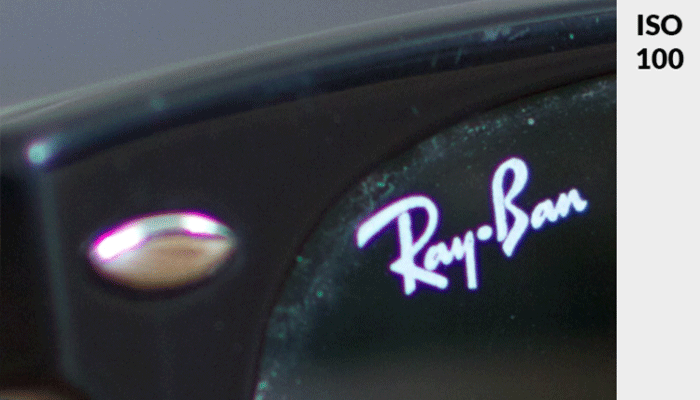
As you can see, the higher the number, the stronger the noise becomes.
For this reason, I advise keeping your ISO levels as low as possible, but without impacting the image in other ways.
For example, if you’d need to set a shutter speed that introduces camera shake in the image, it’s much better to set a higher ISO instead. Reducing noise is possible in editing software, and also in-camera, to an extent. Correcting motion blur, on the other hand, is nearly impossible.
So, let’s talk about noise reduction for a minute. There are many kinds of noise reduction software out there. Such algorithms are also built into popular post-production tools, like Lightroom.
But you’ll find that this only “smooths out” the noise.
Excessive noise reduction can result in an airbrushed effect on faces. It reduces the detail and sharpness in a photo as shown below (cropped to better show the effect).
It has its uses but in moderation and with consideration as to what you’re using the photo for.
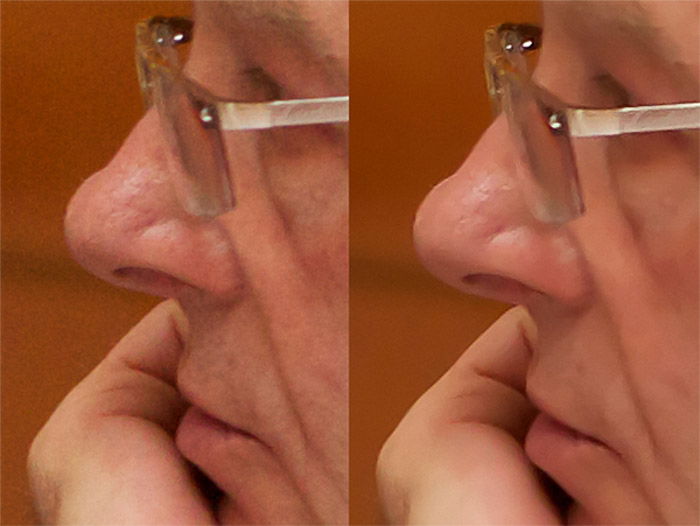
How to use ISO
It’s quite apparent that you should use low ISO in bright environments and higher ISO in darker environments.
But besides the environment, you must also take into account your other two exposure parameters, and set ISO accordingly.
Let me bring a few real-life examples (case studies, if you will) of using ISO.
Scenario 1 – Travel Photography in Daylight
You’re using a 28-70mm lens at 28mm to get a decent, wide field of view.
In bright daylight, you have plenty of light. For casual street and travel shooting, you want to freeze the motion of people and your own hands. This will require you to set a shutter speed of 1/250s or faster.
You choose an aperture of f/5.6 because you want most of your image in focus.
Clearly, in this case, you will be using ISO 100. Even so, you might
find yourself actually overexposing – compensate by decreasing your
shutter speed.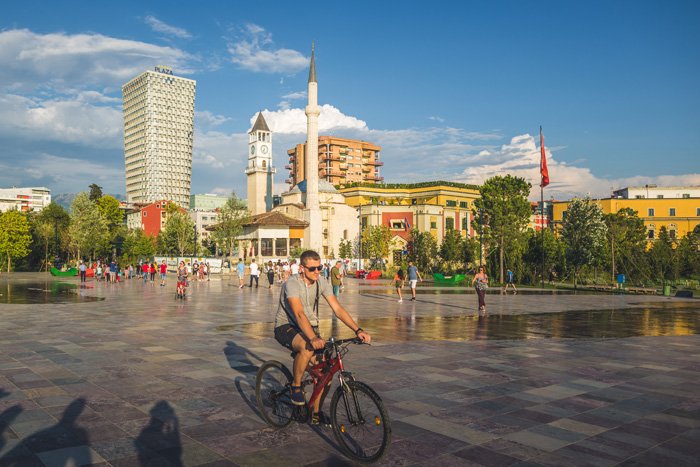
Scenario 2 – Family Photo Indoors
You’re in a moderately well-lit room during the afternoon. There is some natural light leaking in, but not nearly as much as in the previous case.
You’re using the same lens, but this time at 50mm to get a clean shot of two family members. You open up your aperture to f/4 this time, because you want the two of them fully in focus, but the background blurred.
On this occasion, you can slightly reduce your shutter speed, because you’ll be holding your camera more steadily, and your subjects will be posing. Their movement will be much more subtle. You’ll get along with 1/125s.
These circumstances require you to raise your ISO to somewhere
between 400 and 800. Here, you’ll be using ISO only to get the correct
exposure – your other parameters are set.
Scenario 3 – Music Show at Night
You’re in the mosh pit of an outdoors stage. The musicians are very well-lit, but they’re also moving quite quickly. You choose to use a longer lens, an 85mm at f/2, to separate one of them and get a clean image.
You’re limited to 1/400s in shutter speed because you want to fully freeze their motion.
The lights are changing quickly in intensity. So, you decide to grab a moment when the performer you’re aiming to capture is brightly lit, and the background is quite dark.
To get a correct exposure on the person, you’ll need to choose a high
ISO setting. This can be anywhere between 1600 and 4000. You’ll get
plenty of noise in the background, but your subject will be
well-exposed, and the picture will look fine.
Scenario 4 – Wildlife in Overcast Weather
Next day, you decide to take on some adventure and capture some wild birds. You grab your 100-400mm lens, which is not fast but reaches far. The day is overcast. There is plenty of light, but not as much as if it was direct sunlight. You like this better because this diffuse and soft light looks nicer on animals.
To freeze the motion of a bird taking off close-up, you’ll need to choose a very fast shutter speed. At least 1/1000s, but it can go up to 1/4000s. Here, we choose the easier option of 1/1000s.
You’re limited by the f/5.6 aperture of your lens on the zoomed-in end.
In this instance, you’ll need to use a higher ISO setting of 800 to 1600, even outdoors in the daytime.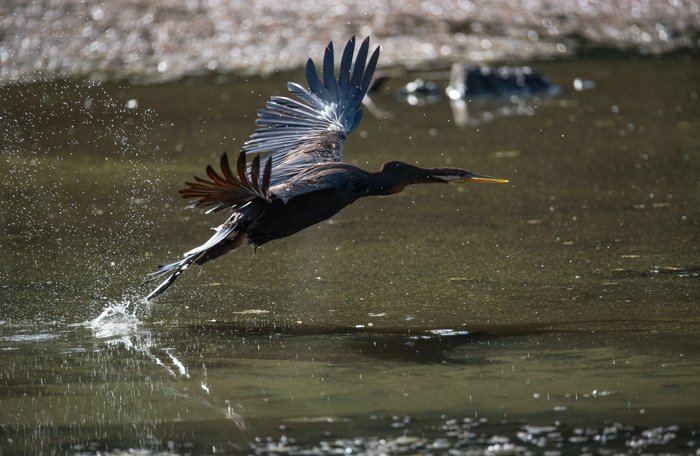
Scenario 5 – Landscape Photography at Dusk
You’re out in a field, surrounded by beautiful mountainous scenery. You want to capture right at dusk, in the last light of the day.
The light is dim, but fortunately, you have a tripod. This means you can use basically any shutter speed you want. In this shoot, that will be your main variable. Your aperture is locked at f/16 for good focus across the scene.
Your ISO is fixed at 100 – you want the highest possible quality and
detail. As landscape images are more likely to be printed large, this is
more important than, let’s say, in the case of a sports or music show
shoot.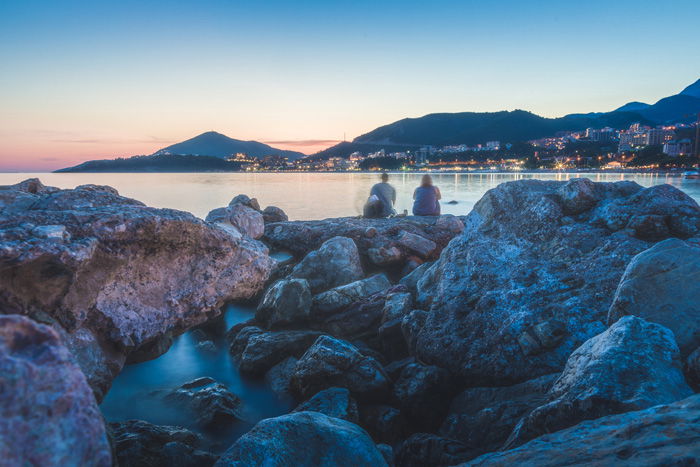
Where Is ISO on my Camera?
To be able to change ISO, you need to set your camera to manual, or one of the semi-automatic modes (S/Tv, A/Av, P).
Depending on the make and model of your camera, there are different ways of adjusting ISO.
On professional and prosumer cameras there is always a separate button for ISO, without exception. This is because, in a fast-paced professional environment, you need quick access.
On entry-level DSLR and mirrorless cameras, it’s usually hidden in a menu or accessible by pressing two buttons (or dial and a button) at the same time.
On compact cameras which offer manual control, it’s also in the
menus. If your camera doesn’t offer manual control, it will set the ISO
automatically as well.
ISO Across Cameras
ISO noise and dynamic performance are not the same across all cameras. There are huge differences, depending on age, sensor size, camera category, and sensor technology, among others.
Let’s start with age. ISO performance has been one of the ever-evolving features of digital cameras. Every new generation of cameras brings lower noise levels, higher dynamic range, and better low-light performance overall.
Cameras from 2019/2020 give you a 2 to 3-stop advantage over their precursors from a decade ago because of software and sensor developments.
At least equally important is the effect of sensor size on low-light operations. Because smaller sensors get less light when using lenses with the same f-stop, their ISO noise levels are also higher.
A full-frame camera from the same generation usually performs 1-1.5 stops better than an APS-C crop model. Which, in turn, is 0.5 to 1 stop better than a camera with a Four Thirds sensor.
Today’s modern full-frame cameras give very usable images up to ISO 25600.
Compact cameras and smartphones, of course, are the losers of this race with their tiny sensors.
Camera category, or price range, is also a determining factor, although not as much as the prior two. A low-tier model, such as a Canon Rebel, won’t perform as well as a Canon 7D-series model (both APS-C), even if they’re from the same generation. They also have identical sensor size, but frankly, more money just buys more sophisticated technology.
How ISO in Digital Cameras Actually Works
It’s time to get slightly more technical. If you’re aiming to understand how your camera works, read on.
What does ISO mean in a digital camera, really? Nine out of ten photographers will tell you that ISO refers to the sensitivity of the image sensor.
This explanation is great for simplified illustration purposes, but it’s not the full story. Indeed, it is the case if you shoot film, but not on digital.
To be fair, ISO does behave just as if it was changing sensor sensitivity. The higher – the more sensitive – it is, the brighter the outcome will be. The more voltage you send into the sensor, the more sensitive it becomes. Sounds plausible, right? It’s not.
Rather, ISO determines signal amplification, after the shot has been taken. This amplification can be analog or digital, or both at the same time.
In ISO-variant cameras, such as most Canon models, full stop ISOs are always amplified in an analog way. Third stops are differentiated with digital gain. However, due to the circuitry not being optimised for a set level of gain, and being variable instead, these sensors generally provide a worse dynamic range.
ISO-invariant cameras make up a majority of modern mirrorless and DSLR devices, including almost all Nikon, Sony, and Fujifilm models. These work slightly differently.
In the case of the base ISO (80 or 100 on most cameras), there is some analog gain applied, but no digital. Thus, the image will be as clean as possible of noise. At any step above base ISO, there is digital amplification added, but no analog. This raises the noise floor, resulting in more visible noise. However, because the system is optimised for a set level of analog amplification, ISO-invariant cameras are actually slightly better performers in dynamic range and low-light noise.
There are some modern digital cameras that are built with a so-called dual native ISO feature. This essentially means that such cameras have two base ISOs, with all the advantages that brings. In most cases, these are 100 and 800. If you’re shooting at any value below 800, you get a low-level analog amplification and additional digital gain on it above 100.
Once you reach 800, another level of analog gain kicks in, removing the need for lower-quality digital gain. The noise floor is lowered again. As you go up from 800, digital amplification is added back again, but only up from 800. The image quality is thus better at 800 than, say, 640, or even 400. This technology is a significant step up in low-light performance.
Cameras that employ this feature are quite rare today and are mostly video cameras. We’ve seen dual native ISO on the Panasonic S1H, the Panasonic GH5S, and the Fujifilm GFX100 cameras most recently.
Is ISO the Same in All Cameras?
Most photographers assume that any concrete ISO value (say, 200) represents a fixed level of amplification in all cameras. This is not nearly true.
To understand why, you need to understand how different sensor sizes influence exposure and other properties. I have written about this in great length in my article explaining equivalence.
Essentially, even though we have three variables to exposure, only one of them is an absolute value, shutter speed. Shutter speed will always be the same and will have the same effect, no matter what camera use.
Aperture is a tougher question. When we talk about f-stops, we mean relative aperture. F-stop gives a good indication of the amount of light that falls on a specifically sized sensor at a set distance from the lens. So, it’s usable to determine exposure within a given system.
However, when the goal is comparing and standardising exposure between different sized sensors, it’s less helpful. As I mentioned, smaller sensors get less light when using lenses with the same f-stop, in proportion with their surface area.
The point of ISO is to standardise exposures between systems. An exposure of, say, ISO 100, f/4, and 1/100s, must look identical in every camera, in terms of luminance.
Consequentially, ISO values mean higher levels of amplification in smaller-sensor cameras. If we expand this, you’ll also see that higher resolution cameras need higher amplification than lower resolution ones at the same size. Thus, pixel-level noise is generally more noticeable in high-resolution and small-sensor cameras.

Raising ISO vs Brightening Your Photo on a Computer
When you step away from your camera and place the image on your computer, you can’t raise the ISO any more. Editing software such as Adobe Lightroom will only allow you to interpret the digital data that’s already in there.
The exposure slider increases in points. +1 stop looks just as if you collected one more stop of light. It has a similar effect in overall tones as raising your ISO from 100 to 200 would have.
As Lightroom can only deal with digital data, tweaking exposure during editing will generally give you noisier results than correctly exposing your shot at the first place. Aim to get a correct exposure during the shoot.
An exception is ISO-invariant cameras. With RAW files from such cameras, you’re much less limited when setting exposure after the fact. If you’re using uncompressed files, your image will almost behave as if you were changing ISO, and not seeing much more noise.
Still, you’re better off actually correctly setting ISO, because previewing your images is easier then. Also, you risk building a bad habit of forgetting correct exposure, which is detrimental to your photography in the long run.
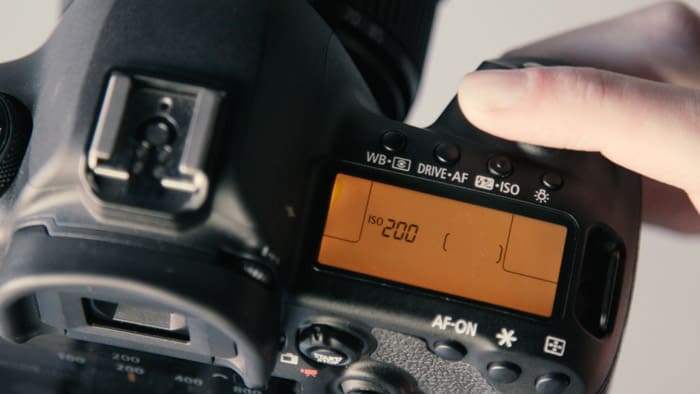
ISO in Film Cameras
As I mentioned, the “sensitivity” explanation originates from the film era. When shooting a film camera, you don’t set your ISO at the press of a button.
Instead, each film type has an ISO rating which relates to the light-sensitive emulsion layer on the film. This rating is also called speed.
Depending on what you’re shooting, you choose a film that matches your sensitivity needs. For daylight, you use ISO 100 or 200 film, for indoors, you generally use ISO 400 film, and so on.
You will find that film and digital both have increased noise levels at higher ISO settings. However, film noise, or film grain, is generally considered to look more pleasing. I have to agree with that. While digital noise can be hurtful to your image, especially if you’re used to the ‘clean’ look, film grain adds to the image most of the time.
Of course, this is an enormous generalisation, but if you’re ever thinking about shooting film (or going digital from shooting film), keep this in mind.
A Short History of the ISO Standard in Photography
The International Standards Organisation (ISO) is an international body composed of representatives from various national standards organisations. This is where ISO gets the name from. It was formed in 1947 and has it’s headquarters in Geneva, Switerzland.
Ever since the photographic emulsion was developed, different countries tried to enforce standards. This is so photographers knew what sensitivity they could expect from the film.
There were multiple companies and institutions who tried to come up with a method that classified their film in the most straightforward way. This was the early process of trying to work out what we now call film speed.
Numerous standards have been developed before settling at what we know today as ISO in photography. The most notable of them are the following:
- Hurter and Driffield – These two worked on emulsion sensitivity since 1890. It was the standard until 1928. Their system had an inverse system of classification and exposure. The higher the number, the lower the exposure the emulsion needed.
- GOST – From 1928 the Soviet Union used this as their standard until 1951. They then replaced it with the GOST system, which was the Eastern version of ASA.
- DIN – Deutsches Institut für Normung was introduced in 1934. They used degrees for classification. A 3° change would either double or halve the sensitivity.
- ASA – American Standards Association started in 1943. A linear scale showed that 400 ASA is twice as fast as 200 ASA, and 100 ASA is half as fast as 200 ASA. These film classifications have been kept when the world adopted the ISO photography standard in 1988.
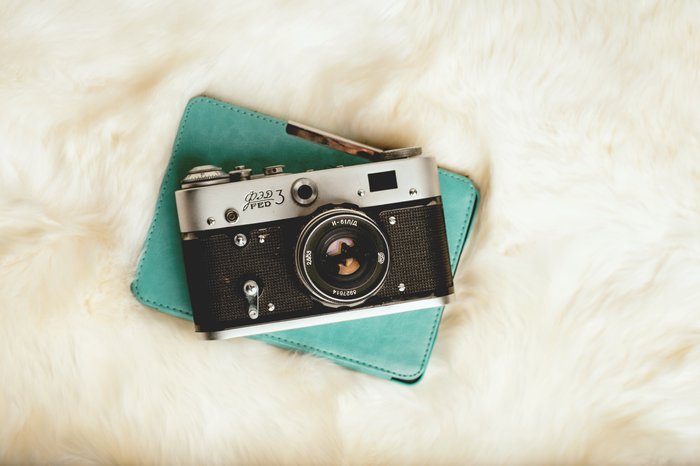
I hope this article has helped you understand and comfortably use ISO on your camera.
I recommend practising manual control of the camera as much as you can. Being able to adjust all the basic exposure parameters instinctively will open up new ways in photography, I can promise that.
Once you no longer have to think about all the basic stuff – that’s when your photography really takes off.
No comments:
Post a Comment
Note: Only a member of this blog may post a comment.